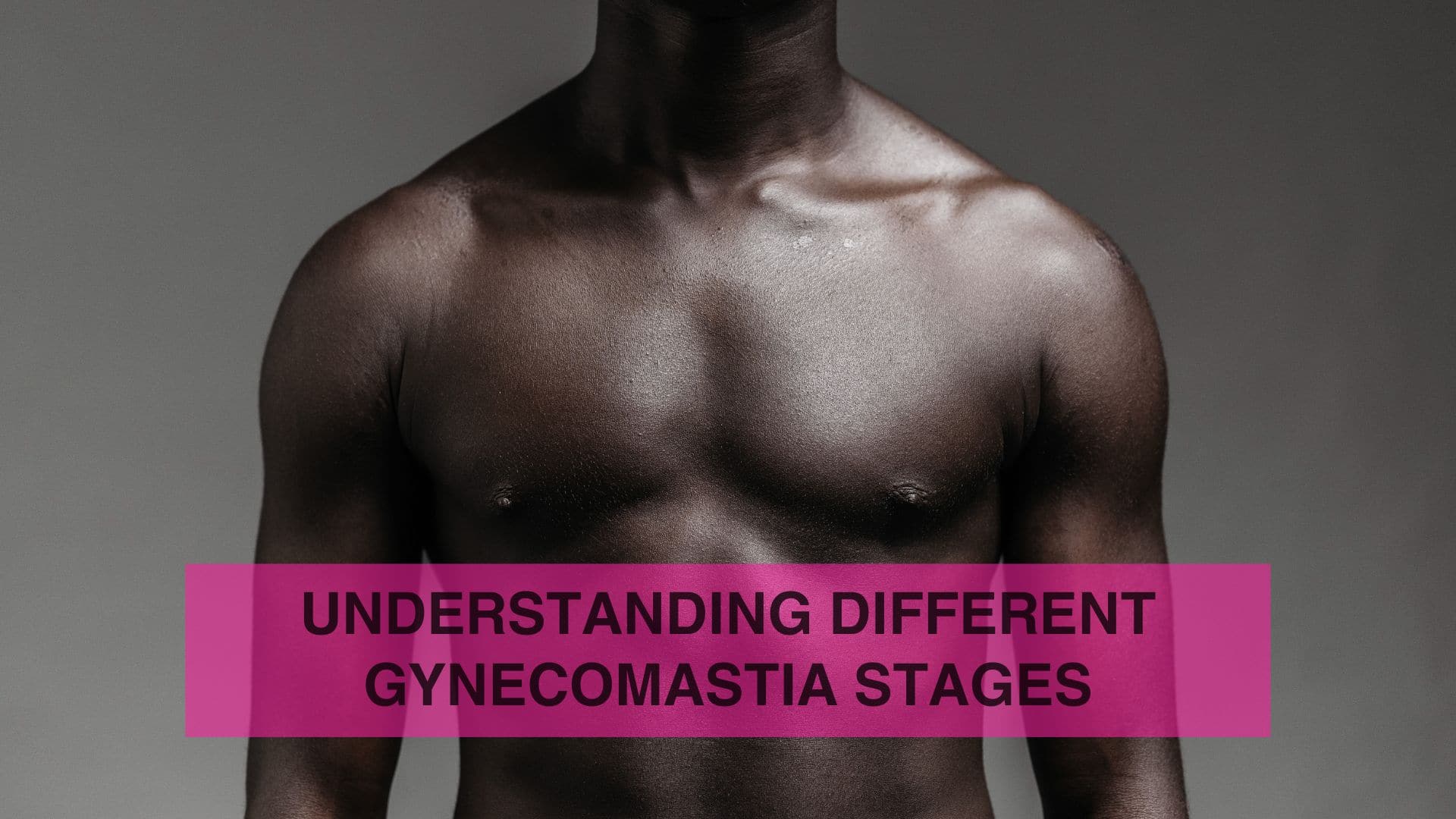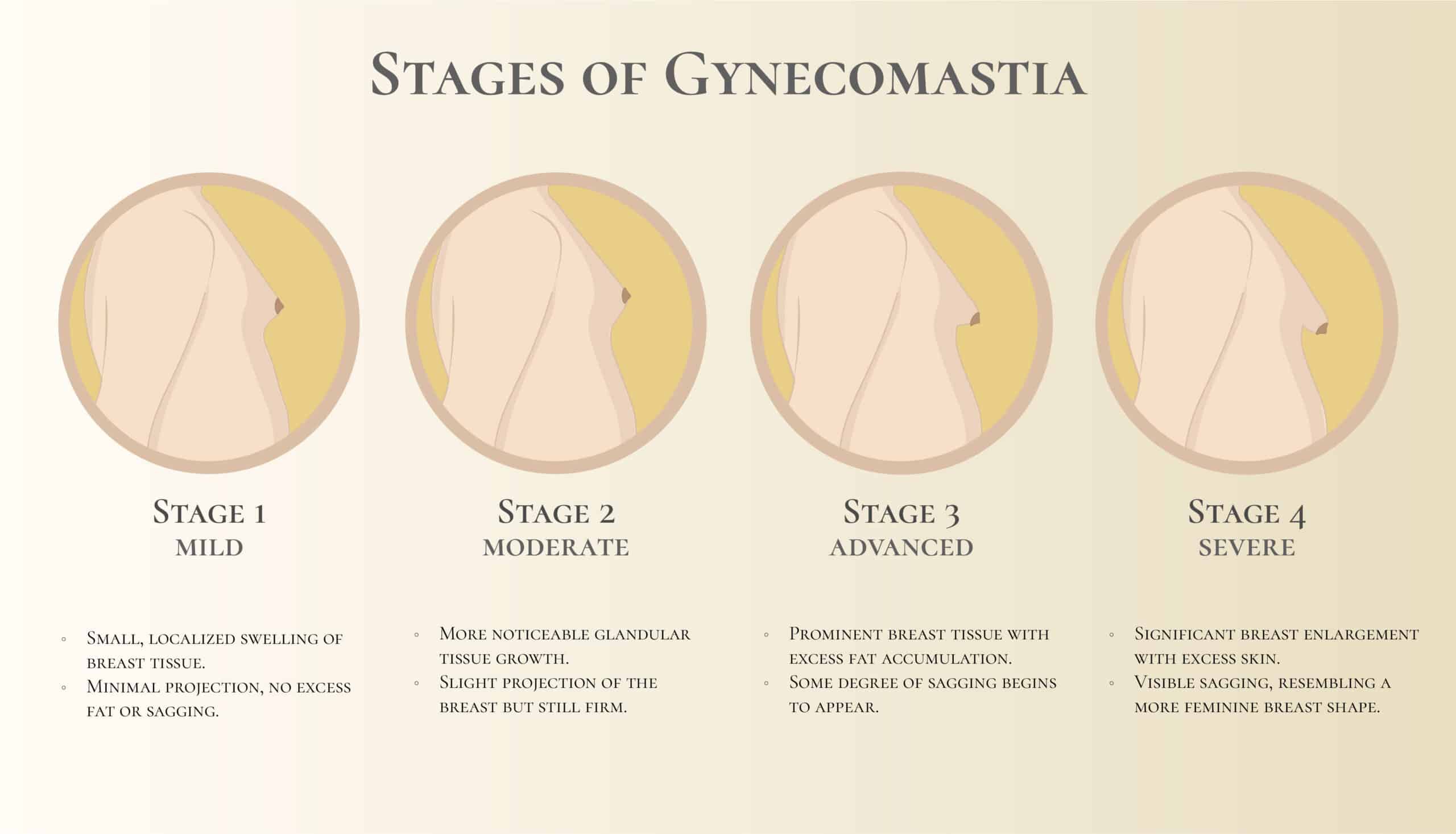Understanding Different Gynecomastia Stages
Written by: Dr. Dahlia Rice. Posted in: Blog

Gynecomastia is a condition that leads to the development of excess breast tissue in males. It can occur in one or both breasts and affects men of nearly all age groups. Many people experience hormonal changes that contribute to this condition, making it more common than most realize.
There is no reason to feel ashamed about gynecomastia. It is often caused by factors beyond a person’s control, such as hormone levels or underlying health conditions. Below, we’ll go over what gynecomastia is and what the various gynecomastia stages are.
Table of Contents
ToggleWhat Is Gynecomastia?
Gynecomastia occurs when there is an imbalance between hormones estrogen and testosterone. This leads to the development of glandular tissue in the male breast. While it can happen at any age, pubertal gynecomastia is particularly common.
So, is gynecomastia reversible? There are multiple gynecomastia causes, including hormonal imbalance, certain medications, and anabolic steroids. In some cases, this means gynecomastia is reversible. However, often, gynecomastia in adults is more likely to persist when the underlying cause is not addressed. Treatment can range from hormone therapy to gynecomastia surgery, depending on the severity.
Gynecomastia Stages
Doctors use different stages of gynecomastia to classify the condition based on severity of breast tissue growth, excess skin, adipose tissue, and more. These stages (or grades of gynecomastia) help determine the best approach for treatment of enlarged breast tissue.
The grading system accounts for the amount of breast enlargement, presence of excess skin, and whether surgical intervention may be necessary. Remember you can always look at gynecomastia stages photos to learn more about what the stages look like.
Gynecomastia Grade I
Grade I gynecomastia is the mildest form, involving a small amount of glandular breast tissue without significant excess skin. This stage typically results in mild enlargement of the male breast.
How Gynecomastia Grade I Is Treated
In many cases, this stage does not require surgical intervention. Lifestyle changes, hormone therapy, or monitoring hormone levels can help. If gynecomastia persists, male breast reduction surgery may be considered.
Gynecomastia Grade IIA
This stage involves moderate enlargement of the breast with some excess breast tissue. However, there is still no significant skin sagging at this stage.
How Gynecomastia Grade IIA Is Treated
Treatment options depend on the individual case. Some patients see improvement with hormone therapy or lifestyle adjustments. If glandular tissue is prominent, gyno surgery may be recommended to remove the excess tissue.
Gynecomastia Grade IIB
Grade IIB gynecomastia presents with enlarged male breasts that may appear more noticeable under clothing. This stage includes a greater amount of glandular tissue and potential skin laxity.
How Gynecomastia Grade IIB Is Treated
When gynecomastia reaches this stage, gynecomastia surgery is often the most effective option. Excess skin and tissue may need to be removed for optimal results. A physical examination by a gynecomastia surgeon will help determine the best approach.
Gynecomastia Grade III
This is the most severe gynecomastia stage, with marked enlargement of the male breast. There is often excess skin, and the chest may begin to resemble a female breast shape.
How Gynecomastia Grade III Is Treated
Surgical intervention is typically necessary for this stage. Gynecomastia surgery involves removing excess glandular breast tissue, fatty tissue, and excess skin. In some cases, liposuction may be combined with glandular tissue removal for the best results.
FAQs: Gynecomastia Stages
Will I have gynecomastia if my dad had it?
In other words, is gynecomastia genetic? Yes, genetics can play a role in gynecomastia. If family members have experienced the condition, there may be a higher likelihood of developing it. However, other factors like hormone levels, lifestyle, and medications can also contribute.
Can gynecomastia go away on its own?
In some cases, gynecomastia is reversible without treatment. Pubertal gynecomastia often resolves as hormone levels stabilize. However, gynecomastia in adults is more likely to persist, requiring medical evaluation.
What are the risks of untreated gynecomastia?
While gynecomastia is not dangerous, it can cause emotional distress and impact self-confidence. Severe gynecomastia may lead to physical discomfort or nipple discharge. Consulting a gynecomastia surgeon can help determine the best course of action.
Does weight loss help reduce gynecomastia?
Weight loss can help if there is a significant amount of fatty tissue contributing to the condition. However, if excess breast tissue or glandular tissue is present, cosmetic surgery may be needed to achieve the desired results.
Get in Touch with Us to Book a Consultation
Excess breast tissue can be a huge point of concern for many men. If you are struggling with this issue, know that you have options available. You don’t have to live feeling self-conscious about your chest, wearing t-shirts into the pool, and avoiding other activities.
Take control and book an appointment to learn more about gynecomastia surgery today. Book your consultation with board-certified plastic surgeon Dr. Dahlia Rice. We look forward to hearing from you.


